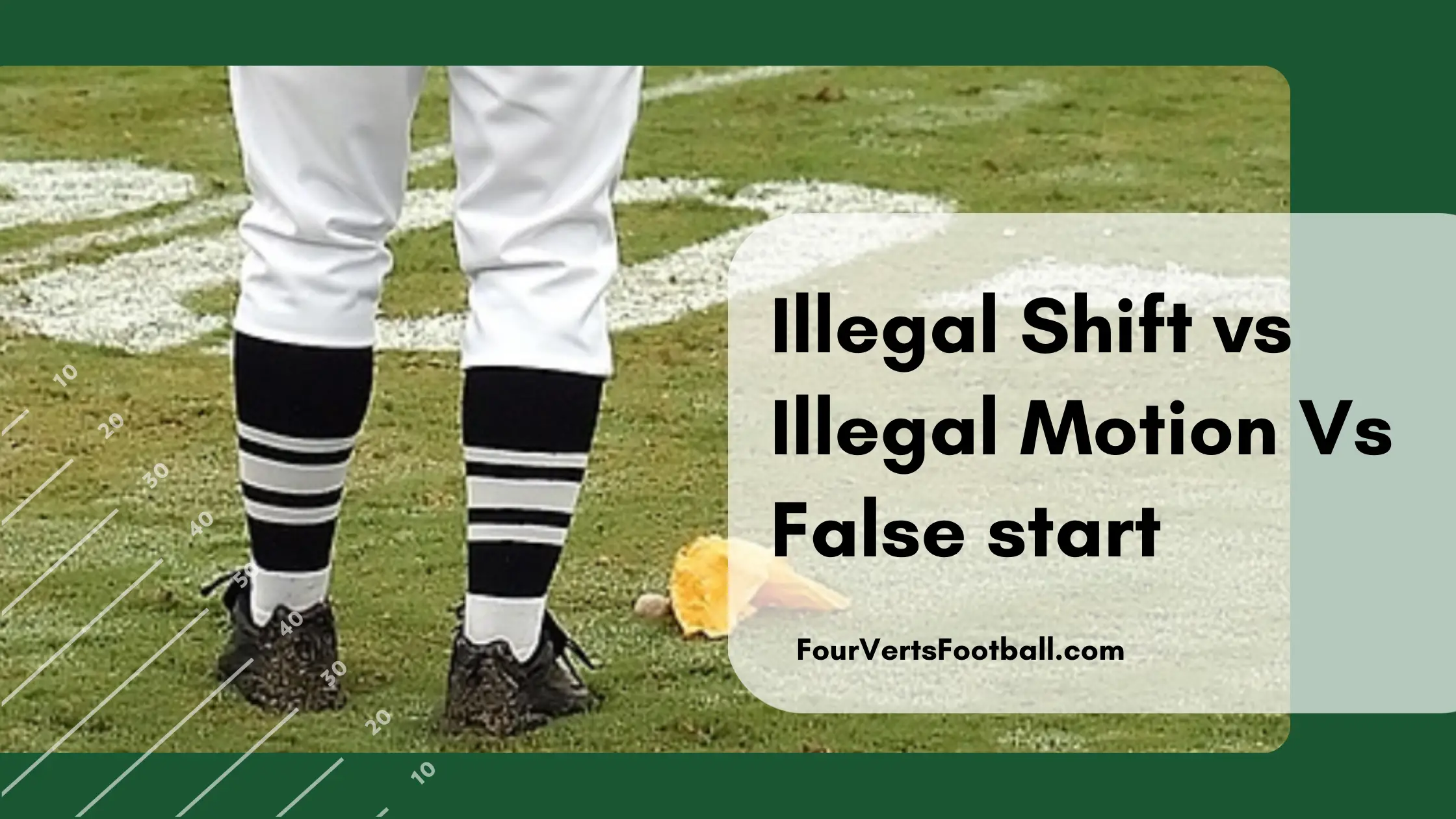We get it, with all the penalties in the game of football it can be hard to keep track. This article is going to focus on those pre-snap offensive penalties that always seem to come at the worst time. This article is going to break down the illegal shift vs illegal motion vs false start.
What Is A False Start?
The false start is the most common and likely easiest to understand out of these three penalties. A false start occurs when an offensive player has assumed a set position and moves to simulate the start of a play prior to the ball being snapped.
A false start also occurs if a player in motion makes a sudden movement in the direction of the line of scrimmage.
Essentially a false start occurs when you are set for a play and one of your players starts the play. Or acts as they are about to start the play prior to the ball being snapped.
What Is An Illegal Shift
An illegal shift is a little more complex of a rule but it is something worth knowing if you are a football fan. Football teams are able to legally shift players on their side of the line of scrimmage prior to a snap.
A shift occurs when two or more players on the offensive go into motion prior to the snap. In order to perform a legal shift, you must wait one full second after the shift is completed prior to snapping the ball.
An illegal shift occurs when all the players on the offense do not hold their position for a full second prior to the ball being snapped.
This means once you complete a shift you must be sure all your players get into their position and stay there for a full second. It is after this second has passed that your shift has become legal and you can snap the ball.
What Is An Illegal Motion
Illegal motion is the last pre-snap penalty we are going to cover in this article and luckily this one is fairly easy to understand.
When the ball is snapped no players are permitted to be travelling towards the line of scrimmage. Some players are eligible to move laterally across the field. But no players can legally be moving towards the line of scrimmage.
If a player is moving towards the line of scrimmage when the ball is snapped he will be given an illegal motion penalty.
An eligible receiver that is in motion must come to a complete stop prior to snapping the ball. That is if he is lining up on the line of scrimmage. In short, if you move to a different location on the line to start your route you must first come to a complete stop.
Also, if a player under center goes in motion he must come to a full stop for one second prior to snapping the ball. So if the quarterback runs up to the line to yell something to his lineman. He then must get back into position and wait one second before snapping the ball.
Summing It All Up
Now that we have broken down each of these three penalties on their own lets sum up what they mean.
A false start is essentially a penalty that occurs when players start the play too early. Or act as if they are about the start the play.
A shift occurs when two or more players are in motion on the offense. An illegal shift occurs when the team snaps the ball after failing to hold their positions for a full second after the shift occurred.
An Illegal motion occurs when a single player that is in motion is either moving towards the line when the ball is snapped. Or failed to reset their position after they have gone in motion.
In essence, an illegal shift and illegal motion are very similar. Though a shift is typically referring to two or more players in motion while illegal motion is typically referring to a single player.
We hope this guide on the illegal shift vs illegal motion vs false start has taught you everything you were looking to learn. If you have any more questions please let us know.

